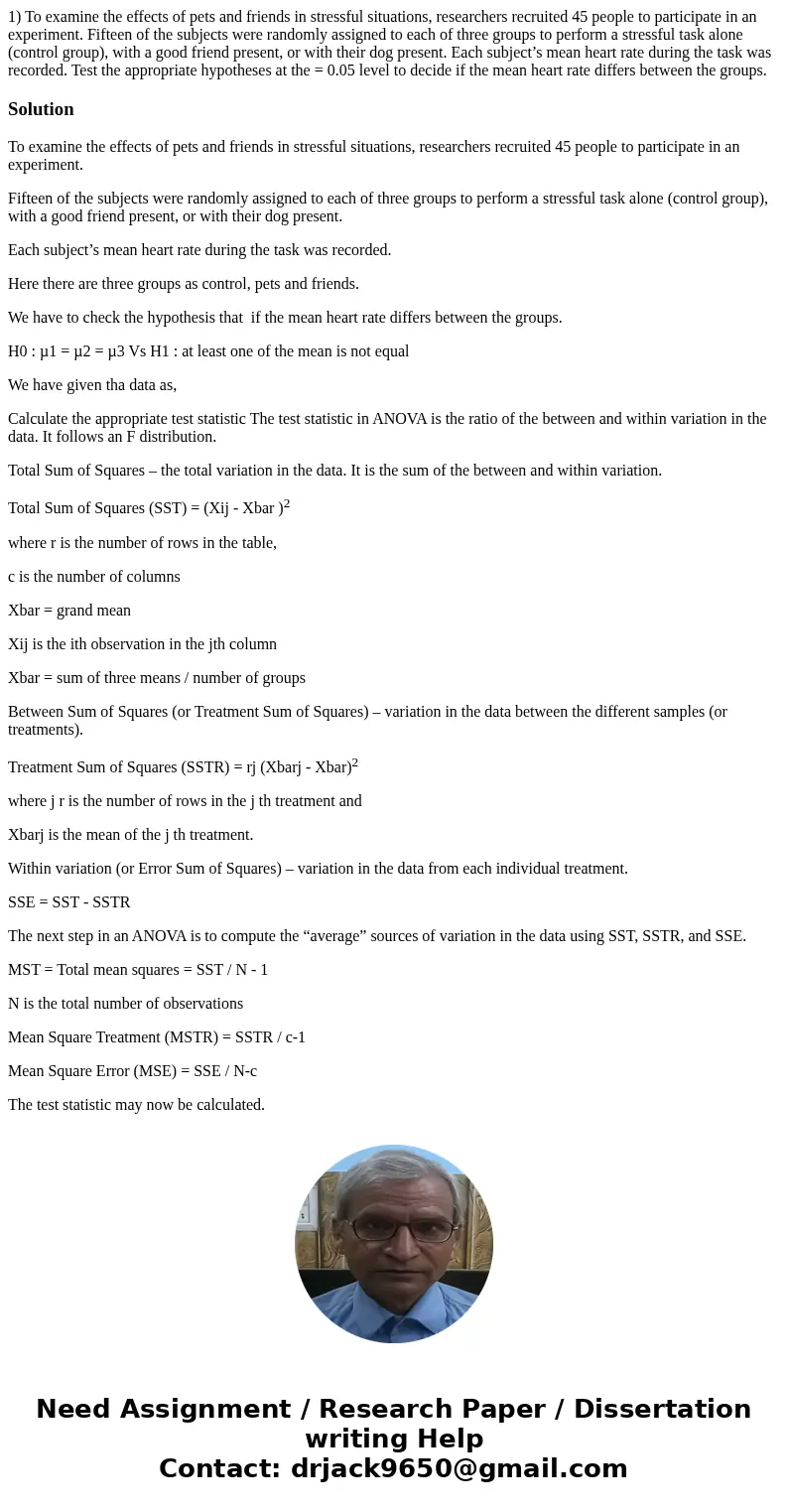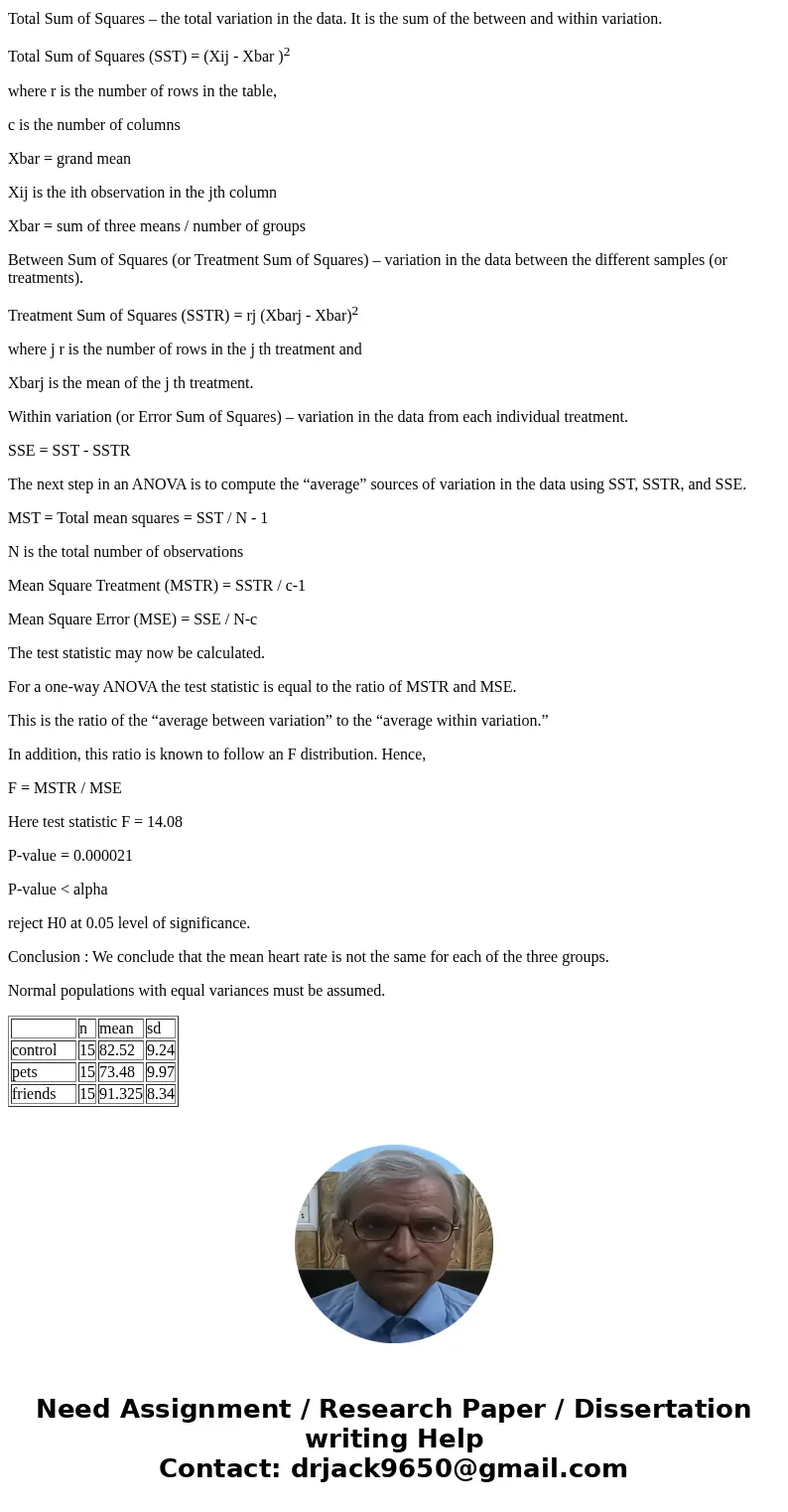1 To examine the effects of pets and friends in stressful si
1) To examine the effects of pets and friends in stressful situations, researchers recruited 45 people to participate in an experiment. Fifteen of the subjects were randomly assigned to each of three groups to perform a stressful task alone (control group), with a good friend present, or with their dog present. Each subject’s mean heart rate during the task was recorded. Test the appropriate hypotheses at the = 0.05 level to decide if the mean heart rate differs between the groups.
Solution
To examine the effects of pets and friends in stressful situations, researchers recruited 45 people to participate in an experiment.
Fifteen of the subjects were randomly assigned to each of three groups to perform a stressful task alone (control group), with a good friend present, or with their dog present.
Each subject’s mean heart rate during the task was recorded.
Here there are three groups as control, pets and friends.
We have to check the hypothesis that if the mean heart rate differs between the groups.
H0 : µ1 = µ2 = µ3 Vs H1 : at least one of the mean is not equal
We have given tha data as,
Calculate the appropriate test statistic The test statistic in ANOVA is the ratio of the between and within variation in the data. It follows an F distribution.
Total Sum of Squares – the total variation in the data. It is the sum of the between and within variation.
Total Sum of Squares (SST) = (Xij - Xbar )2
where r is the number of rows in the table,
c is the number of columns
Xbar = grand mean
Xij is the ith observation in the jth column
Xbar = sum of three means / number of groups
Between Sum of Squares (or Treatment Sum of Squares) – variation in the data between the different samples (or treatments).
Treatment Sum of Squares (SSTR) = rj (Xbarj - Xbar)2
where j r is the number of rows in the j th treatment and
Xbarj is the mean of the j th treatment.
Within variation (or Error Sum of Squares) – variation in the data from each individual treatment.
SSE = SST - SSTR
The next step in an ANOVA is to compute the “average” sources of variation in the data using SST, SSTR, and SSE.
MST = Total mean squares = SST / N - 1
N is the total number of observations
Mean Square Treatment (MSTR) = SSTR / c-1
Mean Square Error (MSE) = SSE / N-c
The test statistic may now be calculated.
For a one-way ANOVA the test statistic is equal to the ratio of MSTR and MSE.
This is the ratio of the “average between variation” to the “average within variation.”
In addition, this ratio is known to follow an F distribution. Hence,
F = MSTR / MSE
Here test statistic F = 14.08
P-value = 0.000021
P-value < alpha
reject H0 at 0.05 level of significance.
Conclusion : We conclude that the mean heart rate is not the same for each of the three groups.
Normal populations with equal variances must be assumed.
| n | mean | sd | |
| control | 15 | 82.52 | 9.24 |
| pets | 15 | 73.48 | 9.97 |
| friends | 15 | 91.325 | 8.34 |


 Homework Sourse
Homework Sourse